
About UsThe Numismatic Bibliomania Society is a non-profit organization promoting numismatic literature. For more information please see our web site at coinbooks.org SubscriptionsThose wishing to become new E-Sylum subscribers (or wishing to Unsubscribe) can go to the following web page link MembershipThere is a membership application available on the web site Membership Application To join, print the application and return it with your check to the address printed on the application. Membership is only $20 to addresses in the U.S., $25 for First Class mail, and $30 elsewhere. For those without web access, write to: David M. Sundman, Treasurer AsylumFor Asylum mailing address changes and other membership questions, contact David at this email address: dsundman@LittletonCoin.com SubmissionsTo submit items for publication in The E-Sylum, just Reply to this message, or write to the Editor at this address: whomren@gmail.com
BUY THE BOOK BEFORE THE COIN |
- WAYNE'S WORDS: THE E-SYLUM APRIL 6, 2014
- LAKE BOOKS' 118TH SALE CLOSES MAY 6, 2014
- NEW BOOK: THE COMPLETE COINAGE OF DOMITIAN
- NEW BOOK: CZECH AND SLOVAK TELEPHONE TOKENS
- HUGO GRECO 1932-2014
- DICK JOHNSON'S TRIBUTE TO HUGO GRECO
- PLANS FOR BOOK ON CANADIAN CENTENNIAL MEDALS
- QUERY: U.S. GOLD AND SILVER BULLION INFORMATION SOUGHT
- MEDAL HONORS NATIONAL MOTTO ANNIVERSARY
- NOTES FROM E-SYLUM READERS: APRIL 6, 2014
- ON THE EARLIEST SALE OF U.S. NUMISMATIC AUCTION CATALOGS
- SUNDMAN'S 1870 CARSON CITY HALF DOLLAR DIE EXHIBIT
- MORE ON COIN RUBBINGS
- ARCHIVE OF THE SHEKEL AVAILABLE ONLINE
- SHERLOCKIAN NUMISMATISTS CLUB PROPOSED
- WAYNE'S NUMISMATIC DIARY: APRIL 6, 2014
- THE E-SYLUM 2014 APRIL FOOL'S ISSUE
- MORE ON CHOCOLATE COINS
- NEW HOARD DISCOVERED IN NORTHERN CALIFORNIA. NOT!
- MORE MINT ROBBERIES
- MORE ON ENGRAVED CONFEDERATE DAVIS FLIGHT MEDALS
- MORE ON THE SCHWAAB COMPANY OF MILWAUKEE
- HOWARD BERLIN VISITS BERLIN, STUTTGART, AND TÜBINGEN
- THE 1684 HORTUS MEDICUS TOKEN
- MORE ON THE PENNY-CENT HOLY WAR
- SPINK SELLS REDDITE CROWN FOR RECORD PRICE
- ROYAL MINT RECEIVES SS GAIRSOPPA BULLION
- FEATURED WEB PAGE: "WON" COINS OF THE REPUBLIC OF KOREA
Click here to access the complete archive
To comment or submit articles, reply to whomren@gmail.com
WAYNE'S WORDS: THE E-SYLUM APRIL 6, 2014

Our new subscribers this week include two more numismatic interns: Monica Bacon and Derrick Lilly, courtesy of the Professional Numismatists Guild, Inc. Welcome aboard! We have 1,718 email subscribers.
Having been crushed with email this week, I was not able to get to every submission in my inbox. Sorry - I'll try to catch up next week.
This week we open with an update from Fred Lake, two new numismatic books, and an obituary and tribute for medal maker Hugo Greco. Other topics include Canadian centennial medals, a new medal on the national motto "In God We Trust", coin rubbings, chocolate coins, and numismatics in the Sherlock Holmes canon.
To learn more about the coinage of Domitian, flamingo dancers, numismatists Augustus Sage and George H. Earle, Mint robberies, Davis Flight Medals, April Fool's Day, and my selfie in front of Mt. Rushmore, read on. Have a great week, everyone!
Wayne Homren
Editor, The E-Sylum
LAKE BOOKS' 118TH SALE CLOSES MAY 6, 2014
Lake Books' 118th auction sale of numismatic literature is now available for viewing on their web site at http://www.lakebooks.com/current.html. The 477-lot auction has a closing date of Tuesday, May 6, 2014 at 5:00 PM(EDT) and bids may be placed until that time via email, United States Mail, fax, or telephone.
The sale features selections from the libraries of Jay Cline of Palm Harbor, Florida and Harry Warren of Memphis, Tennessee. Among the offerings, you will find hardbound auction catalogs from Bowers & Merena, Stack's and Superior. Also, a mint set of Haxby volumes on "Obsolete Bank Notes", many autographed special editions of the "Redbook", and reference material for tokens and medals. Remember to bid early as ties are won by the earliest bid received.
NEW BOOK: THE COMPLETE COINAGE OF DOMITIAN
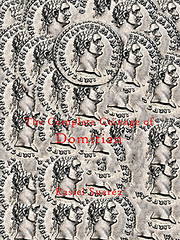 The Complete Coinage of Domitian by Rasiel Suarez is the latest entry in his eBook series on ancient Roman coinage. This new PDF is a complete overhaul of the section on emperor Domitian from the second edition of the highly acclaimed Encyclopedia of Roman Imperial Coins released in 2010.
The Complete Coinage of Domitian by Rasiel Suarez is the latest entry in his eBook series on ancient Roman coinage. This new PDF is a complete overhaul of the section on emperor Domitian from the second edition of the highly acclaimed Encyclopedia of Roman Imperial Coins released in 2010.
Starting with a database of over 10,000 auction lots spanning four decades, over 1,000 varieties were identified including dozens previously unpublished. This painstakingly researched study provides the most detailed and accurate catalog of this emperor's coinage to date. All entries now include true number-based rarity counts, values from actual prices realized in various grades, the most precise dating available and printed as well as online referencing. Weights are now known at a much greater level of precision for each of the available denominations and the plates feature larger, sharper and more coin photos than ever before; an absolute must for the Flavian specialist!
This eBook is priced at only $10 and available for download from http://dirtyoldcoins.com .
For more info on the Complete Coinage series please visit http://www.dirtyoldbooks.com/CC/index.html .
NEW BOOK: CZECH AND SLOVAK TELEPHONE TOKENS
Yosef Sa'ar of Elat on the Red Sea writes:
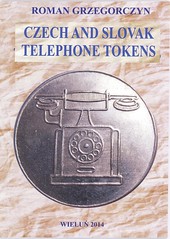 "Czech and Slovak Telephone Tokens" by Roman Grzegorczyn, a new catalogue with great color images, 60 pp. Available from the author, US$26 + $6 shipping by registered post (up to five copies for single shipping charge). Contact and PayPal at romangr1@poczta.onet.pl
"Czech and Slovak Telephone Tokens" by Roman Grzegorczyn, a new catalogue with great color images, 60 pp. Available from the author, US$26 + $6 shipping by registered post (up to five copies for single shipping charge). Contact and PayPal at romangr1@poczta.onet.pl
I have known this diligent researcher for many years. He resides in Wielun, Poland.
THE BOOK BAZARRE
HUGO GRECO 1932-2014
 Long-time medal-maker Hugo Greco, 81, died Sunday, March 30, 2014 in Danbury Connecticut. Greco was born in Italy, and came to America at age 17 with his family. Early in America he served as an entertainer in the traveling troupe of flamingo dancers under his cousin, famed dancer Jose Greco,
Long-time medal-maker Hugo Greco, 81, died Sunday, March 30, 2014 in Danbury Connecticut. Greco was born in Italy, and came to America at age 17 with his family. Early in America he served as an entertainer in the traveling troupe of flamingo dancers under his cousin, famed dancer Jose Greco,
He joined Medallic Art Company October 1955, gaining experience in every aspect of medal manufacture but was particularly noted as foreman of the finishing department. Here he became expert in applying a variety of finishes to medals, including the different color patinas on such items as The Society of Medallists medals.
When Medallic Art changed ownership in 1972 he left the firm and established a branch manufacturing plant for Enduart, an awards firm in New York City. Eight years later he struck out on his own founding Greco Industries in Bethel, Connecticut, Here he produced the trophies for more than thirty sports for the National Collegiate Athletic Association. He brought his two sons into the firm, training them in the techniques he had mastered previously. Success followed as he moved his plant twice to larger accommodations.
In 2007 his crowning achievement was moving Greco Industries into a modern new plant in Bethel, Connecticut. It was here he created one of the most famous medals in the world, the Carnegie Hero Fund Medal. The organization’s previous supplier was not up to maintaining the quality in honor of Andrew Carnegie. New models were prepared – by sculptor Luigi Badia – and new medals struck to their demanding standards.
His major numismatic achievement was a Patina Study organized by Donald Scarinci and Dick Johnson. In preparation for a book on The Society of Medallists, Scarinci asked him for information on the patina finishes of this series of medals.
In a room where all 129 Society of Medallists issues were laid out, and without hesitation Greco moved from one medal to the next, relating – off the top of his head! – the name of each patina and how it was created, revealing not only the chemicals used, but the techniques employed to produce the permanent patina finish to enhance the medal. This was an amazing mental feat but one that exemplified his command of the craftsmanship in the field of medallic arts, an example of his mastery as a medallic patinaeur.
Greco was active in several local organizations, the Italian Amerigo Vespucci Lodge (trustee), Bethel Fish and Game Club (president), Bethel Zoning Board of Appeals, and since 2001, he was this town's police commissioner. Widely popular in his area, more than a thousand attended his funeral services, April 2nd.
In addition to his wife Ann, he is survived by his two sons, Ricky and Michael, two daughters, and twelve grandchildren.
To read the complete obituary, see: Hugo Greco (www.legacy.com/obituaries/newstimes/obituary.aspx?n=hugo-greco&pid=170442925&fhid=12027)
DICK JOHNSON'S TRIBUTE TO HUGO GRECO
A Tribute To Hugo Greco
Many fond memories come to mind in my recalling forty-four years of friendship with Hugo. The most prominent was one of the most recent.
We had both been asked to give speeches at a symposium for sculptor Marcel Jovine, born in Italy as was Hugo, but who had died a year before. In a meeting room on the second floor of New York’s Time-Life building filled with fellow sculptors, medal collectors, friends from Closter New Jersey where Marcel had a studio-home, family members, but also a room filled with Italian enthusiasts, Hugo delivered his tribute to the famed artist.
Without prompting or notes, Hugo delivered a most insightful speech extemporaneously! He informed the audience of his relationship with sculptor Marcel. I’m certain they were impressed – as I was – of Hugo’s command of facts and events that tied the two men’s professional relationship to one another.
At the end of his talk, I felt a large degree of pride – pride that I knew Hugo and that he was a friend. In a magnificent speech he had presented a side I had never observed before.
His talk touched everyone in the audience and had stressed an Italian heritage. The best I could do in my speech was to expand on the master craftsmanship of Italian artists. “There must be something in the drinking water in Italy,” I said, “to give the world such artistic creativity and craftsmanship.”
Hugo’s craftsmanship was dramatically illustrated often. One event stands out in my mind. A friend, Donald Scarinci, was researching the Society of Medallists in preparation for writing a book. He had asked Hugo for information on the patina finishes of this series of medals.
On October 26, 2002 we met at a local motel conference room where medal collector Scarinci had laid out all 129 issues of these medals along both sides of a long conference table. Tape recorders were turned on and I took notes.
Hugo sat behind the first issue and without hesitation or reference to any notes stated the name of the patina on that medal and how it was created. He had held the position at Medallic Art Company, which struck the medals over a 70-year period, of either reproducing the original patina on earlier medals or, for the later years when he was foreman of the company’s finishing department, of creating an appropriate patina for each new medal.
Without hesitation Hugo moved from one medal to the next, relating – off the top of his head! – the name of each patina and how it was created, revealing not only the chemicals used, but the technique employed to produce the permanent patina finish to enhance the medal. This was an amazing mental feat but one that exemplified his command of the craftsmanship in the field of medallic arts.
On another occasion we travelled together on a trip to Pennsylvania to the coal-mining area southeast of Pittsburgh. A Catholic Church in this distressed area had built a memorial on the church grounds devoted to hope and the sanctity of life.
A young Connecticut sculptor had prepared some of the sculptural work on the memorial. He was also commissioned to create a medal for this event.
Hugo made the medal from the young sculptor’s models. It is unusual for the medal-maker to be involved with the events a medal honors, but in this case he accepted the invitation. They also needed someone to assist in publicity so I accompanied him.
We stayed at a local motel but had our meals at the church rectory. Nuns served meals to guests and the three priests who lived there. We got publicity on Pittsburgh TV and all the local newspapers. After the Saturday event we sat in the rectory living room that night with dozens of others and watched the news report on TV.
We attended a ceremonial mass in the Catholic church the next day – a first for this protestant boy – and drove back that Sunday. It was on that long drive back that Hugo and I really bonded. I learned much of his past history and his coming to America after World War II as a 17-year old immigrant. I learned of his struggles in life and his employment at Medallic Art Company in 1955.
I learned how and why he was involved with Enduart, establishing a manufacturing branch of the New York firm. It was here my good wife, Shirley, worked for him for the major part of the eight years he was associated with Endurart, after both had left the employment of Medallic Art.
After eight years, Hugo struck off on his own, establishing Greco Industries. It wasn’t long before he brought his two sons, Ricky and Michael, into the business, training them in the techniques he had mastered previously. Success followed as he moved his plant twice to larger accommodations.
In 2007 his crowning achievement was moving Greco Industries into a modern new plant in Bethel, Connecticut. It was here he created one of the most famous medals in the world, the Carnegie Hero Fund Medal. The organization’s previous supplier was not up to maintaining the quality in honor of Andrew Carnegie. New models were prepared – by sculptor Luigi Badia – and new medals struck to their demanding standards.
Hugo operated in many worlds. As an adult he was a consonant family man – with wife Ann they had four children and twelve grandchildren. As a professional he was a master in the finishing of a medal’s surface, rising to become foreman in Medallic Art’s medal plant.
As an entertainer he was at one time a professional flamenco dancer as part of his cousin, Jose Greco’s traveling troupe. As an outdoorsman he was an officer in the Bethel Fish and Game Club, and a deer hunter in the family’s cabin-home in upstate New York.
As a fraternal enthusiast he was a member and trustee of the Italian Amerigo Vespucci Lodge. As a sportsman he excelled at bocce. As a citizen he was a member of the Bethel Zoning Board of Appeals, and since 2001, he was his town’s police commissioner.
I am fortunate I knew Hugo and call him a friend. We often worked together on many medallic projects. I knew I could always call on him for a favor or a fact, often to document something I was writing.
From a 9-year old in Mussolini's Italy to a New England industrialist, Hugo Greco lived and achieved the American Dream.
I will surely miss him.
PLANS FOR BOOK ON CANADIAN CENTENNIAL MEDALS
A group of enthusiastic collectors of 1967 medals, tokens and other numismatic items related to Canada’s centennial year, will be holding the inaugural meeting of the “1967 Centennial Collectors” club at the 2014 Royal Canadian Numismatic Association Convention. The meeting will take place on Saturday August 16 from 4:00 p.m until 5:30 p.m. in the Garden Studio at the Delta Medowvale Hotel in Mississauga.
“With the 150th anniversary of Canadian Confederation in 2017 just around the corner, the timing is right for organizing collectors of centennial medals and tokens”, says Paul Johnson, one of the interested collectors who is spearheading the meeting.
“A meeting at this convention is ideal, since collectors are coming from all across Canada and the USA”, added Johnson.
The meeting will bring collectors of 1967 material together in an organized manner. One of the main topics of discussion will be the preparation of a new book on Canadian centennial medals and tokens.
“It’s hard to believe that it’s been over 40 years since Jack Robert’s landmark book on Canadian Centennial Medals and related items was issued. Brian Thomson’s last book on the subject was released back in 1996 and since then, most of us collectors have been collecting on our own with those publications as our guide and/or corresponding/meeting with a small handful of other like-minded individuals”, added Jeff Fournier, a long-time collector of Canadian commemorative medals and tokens. “A meeting like this and an updated catalogue makes sense and is long overdue.”
Len Kuenzig is another centennial collector who worked hard to make the inaugural meeting a reality and agrees with Johnson and Fournier.
“The upcoming meeting will be a good opportunity to help organize centennial collectors. We’re hoping to have a non-competitive exhibit of 1967 centennial medals and tokens to add some interest to the meeting. And who knows, there may be a few more surprises”, says Kuenzig. “You’ll have to come out to the convention to see exactly what’s in store for centennial collectors.”
For more information about the 1967 Centennial Collectors Club, please contact Jeff Fournier at:
1205 Fisher St., P.O. Box 22004,
North Bay, Ont., P1B 9P5
Email: jfournier14@gmail.com or phone: 705.474.2141
QUERY: U.S. GOLD AND SILVER BULLION INFORMATION SOUGHT
I’m working on a new Whitman Publishing book that covers U.S. gold and silver bullion --- basically, “everything but” the American Eagle programs. I’ve already talked with some E-Sylum readers but would like to invite others to participate in the book by sharing information, photographs, opinions and thoughts on the market or other aspects of collecting and investing, etc. Anyone interested can drop me a line at dennis.tucker@whitmanbooks.com .
The book will cover:
- American Arts Gold Medallions (1980 to 1984)
- First Spouse $10 Gold Bullion Coins (2007 to date)
- American Buffalo .9999 Fine Gold Bullion Coins (2006 to date)
- The Ultra High Relief Double Eagle (2009)
- America the Beautiful Silver Bullion Coins (2010 to date)
In addition, the book will discuss the silver and gold medals in U.S. Mint programs going back to the national Bicentennial:
- 1970s U.S. Bicentennial medals in silver and gold
- 1988 Young Astronaut Program medals, gold and silver
- 1993 Benjamin Franklin Firefighters silver medal
- 2003 National Wildlife Refuge System Centennial silver medals
- 2011 September 11 national silver medal
- 2013 Theodore Roosevelt silver medal (from the 2013 Coin and Chronicles set)
Contributors will be credited in the book’s acknowledgments.

MEDAL HONORS NATIONAL MOTTO ANNIVERSARY
2014 is the 150th Anniversary of our Nation’s Motto “In God We Trust”. A Pennsylvania numismatist, Tom Uram, has been displaying his award winning exhibit “Historically Significant Two Cent Piece 1864-1872” for close to six years, his exhibit has won various awards at the annual ANA convention, Central States, FUN and PAN shows. For those that are not aware the motto “In God We Trust” first appeared on the 1864 Two Cent piece and Tom’s exhibit highlighted this point.
Last year, knowing the 150th anniversary was fast approaching, he started talking about designing a medal to celebrate the event. With the encouragement of family and friends he started his arduous journey. It wasn’t a journey he was unfamiliar with, having redesigned the membership medal for the Pennsylvania Association of Numismatists, along with fellow PAN members Ben Costello and Rich Jewell; followed by a 50th Anniversary medal for the George Washington Numismatic Association, with club member Tom Gnagey assisting and also the design for the 50th Anniversary Medal for the Pennsylvania Trolley Museum, Washington, PA., as well as a 100th Anniversary medal for St. John The Baptist Byzantine Catholic Church in Lyndora, PA. He knew approximately how long each step would take to complete his task and he knew basically what design he wanted to work with.
He determined that the three main characters playing a historical role in establishing our Nation’s Motto should be recognized on the obverse and the reverse should be similar to the obverse of the two cent piece (See the enclosed story line below). Once he decided this to be his final design concept he took it to U.S.Mint engraver (and AMSA member) Don Everhart.
Don stated that he could work on the models on weekends and should be able to complete the designs in plaster for Tom’s approval within a couple of months. The plasters were ready for Tom’s viewing sometime this past February and he was totally satisfied with the end result, so much so that he wanted signed copies of the plasters for a possible addition to his award winning exhibit. Tom took the plasters to the CCAC meeting at the beginning of March to accomplish this task.
 Fellow AMSA and CCAC members Heidi Wastweet and Jeanne Stevens-Sollman were present when Don signed the plasters for Tom. As of this writing the finished medals have not been returned from the Northwest Territorial Mint in Dayton, NV. But here are examples of the original signed plasters without the lettering.
Fellow AMSA and CCAC members Heidi Wastweet and Jeanne Stevens-Sollman were present when Don signed the plasters for Tom. As of this writing the finished medals have not been returned from the Northwest Territorial Mint in Dayton, NV. But here are examples of the original signed plasters without the lettering.

Author’s note: Tom Uram has been collecting coins, medals and other numismatic items for over thirty years. He is a member of the Citizens Coinage Advisory Commission (CCAC), a Life Member of the American Numismatics Association, the current President of the Pennsylvania Association of Numismatists (PAN), the President of the George Washington Numismatic Association, and a member of various other numismatic clubs and associations in Western Pennsylvania and across the country.

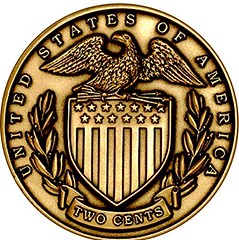
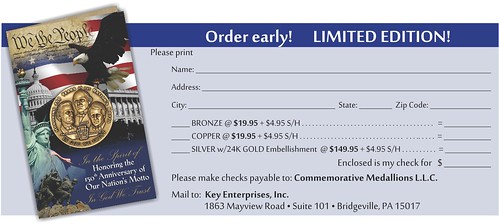
NOTES FROM E-SYLUM READERS: APRIL 6, 2014
Numismatic Grandfathers Fred Michaelson writes:
I loved that photograph from Baltimore. It looks like you were taken to the show by your three grandfathers.

Q. David Bowers, Harvey Stack, Wayne Homren, Lawrence Stack
Fred adds:
The caption under the other picture ("Harvey and Me") reminds me of Jimmy Stewart's six-foot rabbit.
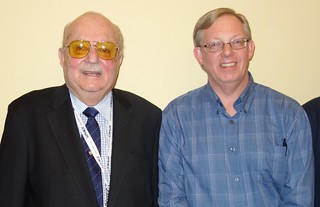

Harvey and Harvey, with Me and Elwood
To read the complete CoinWeek article, see: Excerpts from the E-Sylum: Wayne’s Numismatic Diary, March 30, 2014 (www.coinweek.com/featured-news/excerpts-e-sylum-waynes-numismatic-diary-march-30-2014/)
To read the earlier E-Sylum article, see: WAYNE'S NUMISMATIC DIARY: MARCH 30, 2014 (www.coinbooks.org/esylum_v17n13a22.html)
The George H. Earle Collection Regarding Ron Guth's question about the coins stolen from (and returned to) the Pennsylvania Academy of Fine Arts in the 1930s, Richard Stroman writes:
It appears it was indeed the same Mr. George H. Earle who donated the Greek coins to the Pennsylvania academy and whose collection was sold by H. Chapman in 1912. I submit brief articles from The Numismatist magazine of April 1928 (Earle's obituary) , July 1938 (story on the theft), and January, 1940 (recovery of the coins)

Ron Guth writes:
Thank you and Richard for the information. It's interesting to note that by 1938, the 23 coins were worth almost as much as the whole collection brought in 1912. Coin prices must have advanced considerably. I wonder what the Earle collection would have brought today? Along those same lines, I wonder whose collection would be worth the most today, after adjusting for inflation? Parmelee, Brand, Col. Green, Newcomer, or someone else?
To read the earlier E-Sylum article, see: QUERY: GEORGE H. EARLE, JR COLLECTION (www.coinbooks.org/esylum_v17n13a16.html)
More on Bushnell's Manuscripts Regarding Bushnell's Manuscripts, Mike Paradis writes:
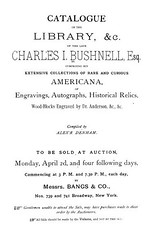 Cornell University's copy of the 4/2/1883 Bushnell library sale is available online.
I do not see his manuscripts included but this was an interesting lot:
Cornell University's copy of the 4/2/1883 Bushnell library sale is available online.
I do not see his manuscripts included but this was an interesting lot:
1013 Hayes, R. The Negociator's Magazine : an Account of the / Monies, Weights and Measures .... of the World. 8vo, calf Lond. 1764 "For a very laughable mistake in regard to the Silver Coinage of Massachusetts, see page 219."—Mr. Bushnell's MS. note.
I see the Negociator's Magazine is also online but I do not see mention "silver coinage of Massachusetts" mention on page 219.
To read the 1883 Bushnell library sale, see: /ia600400.us.archive.org/33/items/cu31924031351798/cu31924031351798.pdf
To read the earlier E-Sylum article, see: ia600504.us.archive.org/18/items/negociatorsmagaz00haye/negociatorsmagaz00haye.pdf
Ethnic Numismatic Humor Fred Michaelson writes:
I leave you with this numismatic (and ethnic) humor from Mason's magazine of December 1867: "A Scotchman asked an Irishman, 'Why were half farthings coined in England?' Pat's answer was: 'To give Scotchmen an opportunity of subscribing to charitable institutions.'"
[It would be nice to change "Pat" to "the Irishman."---still ethnic, but less obnoxious.]
To read the earlier E-Sylum article, see: NUMISMATIC HUMOR CONTEST RESULTS (www.coinbooks.org/esylum_v17n13a21.html)
ON THE EARLIEST SALE OF U.S. NUMISMATIC AUCTION CATALOGS
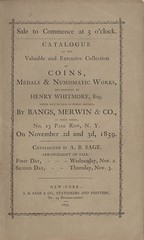 Regarding Jim Glickman's question about the earliest sale of U.S. numismatic auction catalogs, Mike Paradis writes:
Regarding Jim Glickman's question about the earliest sale of U.S. numismatic auction catalogs, Mike Paradis writes:
The earliest sale I have noted is the Augustus Sage catalog of 11/2/1859. I believe it had 52 lots of numismatic literature which included lots:
607 Kline. Sold June, 1855. Two days. Fine copy
608 Flandin. Sold June, 1855. Priced and named
To read the earlier E-Sylum article, see: QUERY: EARLIEST SALE OF U.S. NUMISMATIC AUCTION CATALOGS SOUGHT (www.coinbooks.org/esylum_v17n13a09.html)
THE BOOK BAZARRE
SUNDMAN'S 1870 CARSON CITY HALF DOLLAR DIE EXHIBIT
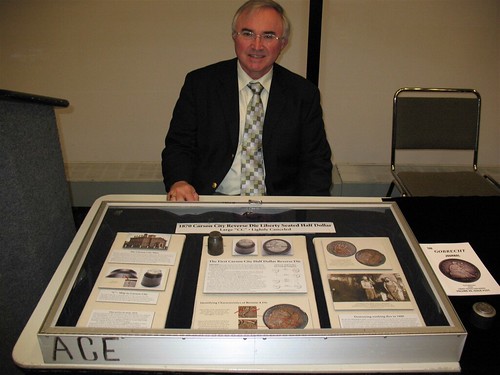
LSCC members and guests at the March 2014 LSCC regional meeting in Balti-more were pleased when Littleton Coin Company President David Sundman displayed his extremely rare lightly cancelled half dollar die. Featured in last month’s E-Gobrecht, this die was used to mint the first half dollars at the Carson City Branch Mint and was identified as from die marriage WB-1, Reverse A for 1870-CC half dollars. David exhibited a wonderful display full of background information. Viewers marveled at the context. David stated it will be available at future shows.
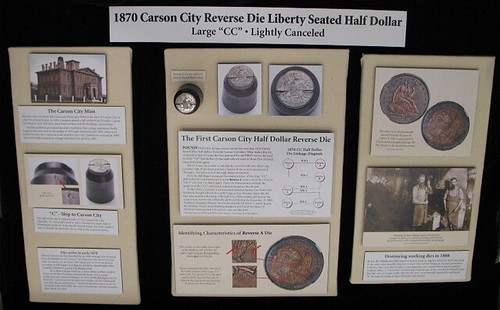
David adds:
I’ll be exhibiting the die non-competitively at the ANA in Chicago.
To read the earlier E-Sylum article, see: WAYNE'S NUMISMATIC DIARY: MARCH 30, 2014 (www.coinbooks.org/esylum_v17n13a22.html)
MORE ON COIN RUBBINGS
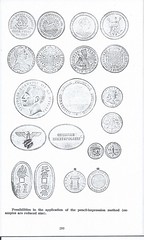 I found more information on rubbings, some of it a bit more sophisticated than what we spoke of, involving certain types of paper and powdered graphite. The articles are both from The Numismatist: H.F. Bowker from July 1953: "Coin Reproductions", and S.G. Yasinitsky from September 1958: "Do It Yourself Illustrations".
I found more information on rubbings, some of it a bit more sophisticated than what we spoke of, involving certain types of paper and powdered graphite. The articles are both from The Numismatist: H.F. Bowker from July 1953: "Coin Reproductions", and S.G. Yasinitsky from September 1958: "Do It Yourself Illustrations".
In some issues of Mason's Coin and Stamp Collectors' Magazine from 1867, I saw that in the correspondence section there where instances where Mason is discussing a particular coin with a correspondent and he asks for a wax impression to be sent. Maybe I'll look for information on this; it seems like fun to try, and probably safer than my mis-adventure with rubbings.
When I decided to try rubbings, I realized that I didn't have a single pencil in the house. I went to Office Depot and found that I couldn't buy fewer than around a thousand pencils in a pack, so I went to a dollar store and got 10 terrible pencils for a dollar. Of course I had no sharpener either, so I bought two for a dollar.
When I tried to open the impervious prison that the sharpeners were sealed in, a sharp piece of plastic stuck under my fingernail. I'd like to kill the guy who invented those things. I immediately put iodine on it. A couple of days later, though, it became infected, and I'm still on an anti-biotic. So much for rubbings. What could possibly happen with hot wax?
To read the earlier E-Sylum article, see: QUERY: COIN RUBBINGS (www.coinbooks.org/esylum_v17n10a13.html)
ARCHIVE OF THE SHEKEL AVAILABLE ONLINE
 Over 40 Years of The Shekel, The Journal of Israel & Judaic History & Numismatics, Available on Website of the American Israel Numismatic Association
Over 40 Years of The Shekel, The Journal of Israel & Judaic History & Numismatics, Available on Website of the American Israel Numismatic Association
In his President’s Message in the January-February 2014 issue of The Shekel, The Journal of Israel & Judaic History & Numismatics, Mel Wacks announces that all of the past issues of the Shekel (from 1968-2010) can be read on the website of the American Israel Numismatic Association at www.theshekel.org/articles.html, giving members, hobbyists, researchers and millions of people around the world access to what is now essentially “The Encyclopedia of Israel and Judaic Numismatics.”
Wacks indicates that “We owe a debt of gratitude to hundreds of our expert writers and especially to Dr. Thom Curtis, Department of Sociology, University of Hawaii at Hilo and his team of volunteer sociology students --Michael Sado, Ian Mitchener, Jodi Vierra, and Koran Munafo—who performed the time-consuming tasks of scanning and reformatting each issue. Each issue is being digitized in high resolution as a .pdf file so that it can be viewed as it was originally published with photos, graphics and advertisements intact. These files are searchable so readers will be able to use the search feature to identify articles containing keywords of interest.”
For those who prefer to read the latest issues of The Shekel, the bimonthly full-color award-winning magazine, are available for dues of $25 per year in U.S., or $35 Overseas sent to AINA, PO Box 20255, Fountain Hills, AZ 85269, or call 818-225-1348. Members also receive free annual medal.

Archives International Auctions, Part XVIII
Chinese and Asian Banknotes, Coin & Scripophily including additional properties from various consignors
Highlights include:
- Lot 1870. Hupeh Government Mint, 1899 Issue
- Lot 1904 Hong Kong, Chartered Bank of India, Australia & China, 1934, $50, P-56
- Lot 1551 Board of Commissioners of Currency ND 1976 $100 Specime
- Lot 1683 China, Bank of Communications, 1941, 500 Yuan, P-163a, SM126-263 F
- Lot 1806 International Banking Corporation, 1919 Tael Issue Specimen

1580 Lemoine Avenue, Suite #7
Fort Lee, NJ 07024
Phone: 201-944-4800
Email: info@archivesinternational.com
WWW.ARCHIVESINTERNATIONAL.COM
SHERLOCKIAN NUMISMATISTS CLUB PROPOSED
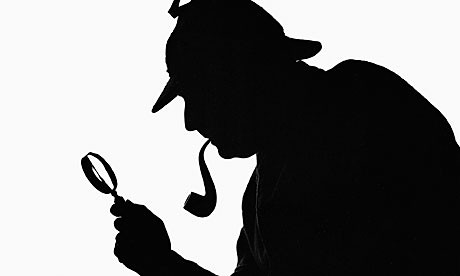
I was introduced to the world’s only consulting detective, Sherlock Holmes, in my fifth grade reading class. We were assigned to read The Adventures of the Three Garridebs by Sir Arthur Conan Doyle. I had started collecting coins the previous year and this story involved a counterfeit operation’s printing press (I probably should have done a spoiler warning there, for those not familiar with the story!).
I was hooked and the next time I went to the library, I checked out the book The Adventures of Sherlock Holmes, which contained the first 12 short stories in the series. The first story, A Scandal in Bohemia, has Holmes keep a gold sovereign as a reminder of The Woman – Irene Adler. In the next story, The Adventures of the Red-Headed League, the plot swirled around an attempted robbery of French gold coins in a bank’s vault. This was great stuff! Over the next several months, I would eagerly read the rest of the stories that make up the Canon.
A few years later, while watching the late Saturday night Mystery Theater on the local UHF television station, I came across Dressed To Kill, the last of the Basil Rathbone – Nigel Bruce series of Sherlock Holmes movies in the late 1930’s and 1940’s. This movie involved finding stolen plates for Bank of England £5 banknotes. There was a pattern emerging where Sherlock Holmes & numismatic items were together in my life.
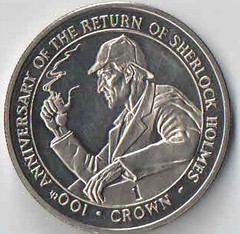 I have this feeling that Sherlock Holmes is a numismatist at heart. He always seems to be carrying a magnifying glass with him… I also believe that many of my fellow numismatists and bibliophiles are fans of Sherlock Holmes as well. Holmes has been the subject of a few items here in the pages of The E-Sylum over the years.
I have this feeling that Sherlock Holmes is a numismatist at heart. He always seems to be carrying a magnifying glass with him… I also believe that many of my fellow numismatists and bibliophiles are fans of Sherlock Holmes as well. Holmes has been the subject of a few items here in the pages of The E-Sylum over the years.
Would there be an interest in forming a Sherlockian “club” of numismatists? If interested, please drop me a quick note at Greg@GregRubyConsulting.com. If there is enough interest, I will arrange for a meeting to take place this summer at the ANA’s World’s Fair of Money in Chicago.
To read the earlier E-Sylum articles, see:
NUMISMATICS AND SHERLOCK HOLMES
(www.coinbooks.org/esylum_v12n40a15.html)
MORE ON NUMISMATICS AND SHERLOCK HOLMES
(www.coinbooks.org/esylum_v12n41a14.html)
WAYNE'S NUMISMATIC DIARY: APRIL 6, 2014
Friday, April 4th started out early, like every weekday. I did the usual - arose a little after 4:30am, exercised a bit, showered, dressed, emptied the dishwasher, checked my email, walked the dog, and got in my car. But I didn't point it toward the office; this time I was heading back to Pittsburgh for more work on the John Burns estate.
I pulled off the PA Turnpike in Irwin about 10:15, and stopped at Arby's for an early lunch. Shortly after 11am I arrived at John's storage units. One of them was open, and filled with numismatic books and empty boxes. I knew I was in the right place.
I introduced myself to Tom Corey and Chuck Moskin, two local club members who have been helping Pat clean up John's townhouse and storage units. I sent them on a mission to retrieve the rest of John's numismatic books from his house. Then I got to work.
My task was to organize the books for sale. It was a jumble, with rarities, run-of-the-mill stuff and even household items like old mail and newspapers sometimes mixed together, in shelf after shelf in unlabeled box after unlabeled box. It was hard to know where to start, but I always figure the only way to do a job is simply to start somewhere and don't quit until you're done. So I started with the first box on a long set of tables lined up the middle of the fifteen-foot wide unit.
It was a fun chore for a bibliophile. I was sorting everything into sections based on estimated value: more expensive books in one section, midrange stuff in another section, and then everything else. The everything else in this case was mostly softbound auction catalogs and some periodicals. We also had categories for science fiction and general interest non-numismatic books. There were a lot of them, and we needed to get them out of the way.
Helpers Dick Gaetano and Tom Fort soon arrived. Tom quickly began helping pick out the better material. We learned that John had a lot of better material in these storage units; he hadn't brought it to shows for sale because he didn't want to sell it, or just couldn't get at it. There had been boxes piled in front of boxes in front of still more boxes.
But there was a lot of midrange material and complete trash mixed in with it. Tons of catalogs, but also boxes of old phone bills and supermarket advertising inserts. That stuff I passed to Tom Corey and Chuck for recycling.
Everyone else broke for lunch at different times, but I kept plowing ahead til 3:00, when I went to the gas station across the road for a snack (and to use the restroom facilities, of which the storage place had none). By the time Pat McBride arrived close to 5pm we'd sorted and labeled over three-fourths of the unit. There were books everywhere - hundreds of boxes.
At 5:15 I had to bug out. By then it was pouring down rain for the third time of the day. Whenever it rained we had to pull down the doors at the ends of the unit, plunging us into near darkness (there was one light bulb at on the end of the unit). Thankfully, I'd brought us some flashlights, which came in handy..
 My first destination was my nearby hotel, where I showered and changed into the suit and tie I'd brought along. The occasion was Tom Fort's wife Gosia's birthday dinner, and I was going to meet the whole Fort family downtown at the Duquesne Club at 7am.
My first destination was my nearby hotel, where I showered and changed into the suit and tie I'd brought along. The occasion was Tom Fort's wife Gosia's birthday dinner, and I was going to meet the whole Fort family downtown at the Duquesne Club at 7am.
I navigated downtown Pittsburgh and pulled into a spot on the 4th floor of a parking garage. Once on the street I knew I was in the big city when I walked past two groups of kids who started arguing and fighting. I called 911 to report it. I described the location and events. The dispatcher asked me what "the actors" looked like. I didn't understand the word "actors" until I made her repeat it. Why talk law enforcement jargon that doesn’t make sense to real people? I almost said, "there aren't acting, they're kicking the crap out of each other for real."
The altercation had just broken up when a police cruiser screamed around the corner. The cops halted one of the boys right in front of the Duquesne Club entrance.
At this point I should note that The Duquesne Club is an old-time society club founded in 1873 by the likes of Andrew Carnegie and his robber baron friends. It's at the tippy-top top of the local social ladder; most Pittsburgers never set foot in the place, and it's been parodied by local editorial cartoonists as "Ye Olde Steele City Club", ground zero of the old boy's network.
 When I told Pat McBride I was going there, he said he'd been in several times, but that he "always came in through the service entrance wearing overalls so I could wallpaper a room." I'd been lucky enough to have been there a few times before for various events.
Walking past the knot of officers and witnesses, I ascended the brown sandstone steps that had welcomed members and guests for over a century.
When I told Pat McBride I was going there, he said he'd been in several times, but that he "always came in through the service entrance wearing overalls so I could wallpaper a room." I'd been lucky enough to have been there a few times before for various events.
Walking past the knot of officers and witnesses, I ascended the brown sandstone steps that had welcomed members and guests for over a century.
The staff at the desk pointed me to the upstairs dining room. I walked up the carved staircase past dozens of old oil paintings and sculptures. I soon was standing in front of one of my favorite paintings, ""When Shadows Hint Death", a western scene by Charles M. Russell. Next to it was a Remington bronze of "The Bronco Buster".
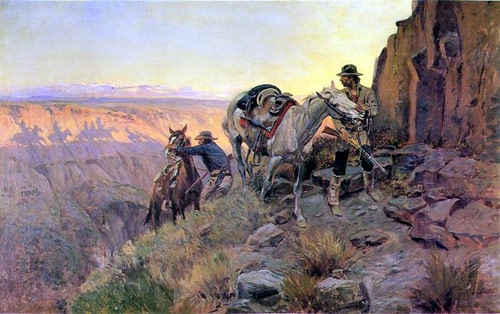
Soon the Fort family arrived - Tom and Gosia Fort, their lovely daughter Annamaria, and Tom's father, Tom Sr. A retired lawyer, at 86 he's hale and hearty and still takes lunch at the Duquesne Club daily, where everyone knows him by name.
We sat down for drinks in the outer room and got caught up on family news while we waited for our table. After some time we were ushered to the dining room. Dinner conversation covered topics from Duquesne Club history to Disney films. It was really great to see them all again.
The multicourse meal was wonderful, and was followed up with a nice cake for Gosia's birthday. Tom Sr. graciously ordered me a plate of the Club's famous macaroons as well after I'd gushed about how I'd had them once before and they were to die for (they still are).
All good things must come to an end, and after our dessert it was time to go. We wandered around a bit to looks at more of the art collection, Another of my favorite artists is Pittsburgher David Gilmour Blythe, and we saw two of his works. We walked through the billiard room to the "secret' passage to the parking garage I hadn't known about. Lining the walls were a number of original "Ye Olde Steel City Club" political cartoons. Not only can the robber barons dish it out, they can also take it.
We said our goodbyes and off I went to pay for my parking and head home. I got to my hotel about 10 and worked on The E-Sylum for a while before calling it a night.
After breakfast at my hotel I headed back to the storage units. It was much colder, and I switched to a heavier jacket, and even needed my hat and gloves. I was the first to arrive and opened up the main unit we'd been working on the day before. Wow - there was still a lot to do, and I'd never left this one unit. There were four more to go! But I kept slogging along and was later joined by Tom Fort and Ed Krivoniak.
I took a phone call from one of the bidders planning to attend the sale, then got back to work. By the time Pat McBride arrived we had the unit in pretty good shape. On long tables down the middle of the forty-foot deep unit were double rows of better books in boxes. Along the walls were other good, but lesser priced books in boxes on metal shelving units. Catalogs, periodicals and other lesser material filled boxes on the floor beneath the table. There were clear aisles on both sides of the table. Whew - what a job it had been! And of course, our work this weekend was on top of all the yeoman work put in by the crew earlier; at first the unit was so stuffed there was little room to walk.
After taking a peek at the other three smaller storage units, Pat, Tom and I went out for lunch at a nice local Italian brick oven restaurant. We all had classic Italian Hoagies, which I'd complained nobody knew how to properly make back in Virginia. It was nice to sit and chat for a bit, but afterwards we all had other commitments to attend to. I got back on the highway about 3pm.
It was nice to get back home, although I had a pile of E-Sylum correspondence waiting. But my trip was both productive and enjoyable. We're all looking forward to the May PAN Show where we'll get John's coins appraised and hopefully sell much of his numismatic literature inventory. Any readers want to form an instant research library, or start a business in numismatic literature? This will be a great opportunity to purchase large lots. Stay tuned for more reports!
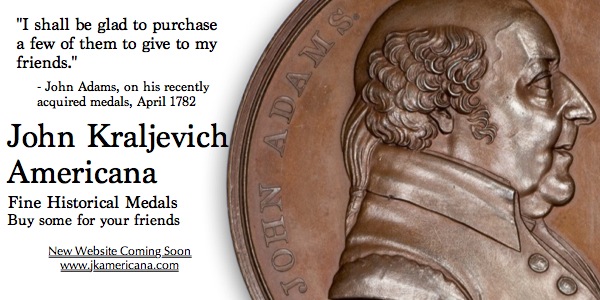
THE E-SYLUM 2014 APRIL FOOL'S ISSUE
James Higby writes:
In other news, I plucked an uncirculated '14-D Lincoln cent for 25c from a dealer's stock at a show over the weekend! As Jack Robinson always said: Think about it. Think about it some more.
Dave Ginsburg writes:
I wouldn't at all be surprised to hear that John was a pack-rat and had a big safe that had a lot of valuable items in it. I was with you all the way up to the 1933 double eagles!
We had a few people going for a while. Mark Fox of Michigan wrote an excited email to me and Pat McBride asking for more information or photos of the coins. I set him straight, and he wins the first E-Sylum Good Sport Award for 2014. Mark writes:
Ugh! You're kidding... Oh well. You really got me worked up for a while!
Paul Schultz also got caught in the trap, and he, too wins the Good Sport Award. He writes:
You got me big time. I should have suspected.
We even hooked John Salyer of Heritage, who wondered if we'd sent the coin find information to the New York Times or the Wall Street Journal, and wondered how to order a copy of the chocolate coin book for his wife. His "LOL!" response to my reply earns him our third Good Sport Award of the year.
I haven't checked the coin chat forums to see where else this may have spread, but most E-Sylum readers caught the joke. Here are some of the responses.
Heath MacAlpine writes:
What astounding news! If the estate wishes to part with the 1974 aluminum cent, I'll offer $23.72 for it sight unseen. It will look great next to my 1975 Kennedy half.
Steve D'Ippolito writes:
Craig Eberhart writes:
Kerry Wetterstrom writes:
David Gladfelter writes:
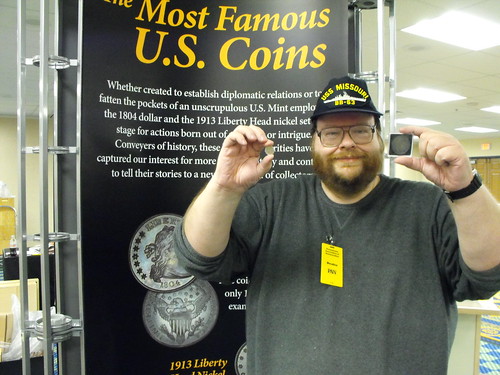
Rich Hartzog writes:
Brad Karoleff writes:
- Dave Lange: "You just couldn't resist, Wayne, could you?"
- Tom DeLorey: "Have you catalogued John's incredible collection of pristine dust jackets yet?"
- Ken Bressett: "BRAVO !!! A nice way to start our day. Your humor did not go unnoticed."
- David Sundman: This is in good numismatic April 1st tradition! Thanks for the chuckles.
- Greg Burns: " You’re a funny guy, Wayne"
M.N. Daycius writes:
ANOTHER M.N. Daycius writes:
(On April 1) George Huber wrote:
Speaking of early Canadian coins, I got out one of my most recent finds on eBay this morning, an 1858 Victoria twenty cent piece graded XF40 PCGS-CAC, and was excited to discover traces of a 7 beneath the 8 on the reverse — quite clearly an overdate 1858/7.
Not only that, I was quite astonished to find on the obverse clear traces of the old right-facing portrait of William IV beneath, his proboscis jutting out from the rear of young Victoria’s hair curl and outlines of the IIII beneath D: G: BR. Unless I am very much mistaken, this would be the first known discovery of an overmonarch among the coinage of Great Britain and her colonies.
And Happy April Fool’s Day to you!
Thanks for having a little fun with us. Dave Bowers added the following, which arrived too late for the April 1 issue. Get your copy now! -Editor
SPECIAL ANNOUNCEMENT FROM WHITMAN PUBLISHING, LLC.
Atlanta, GA, April 1, 2014
Guide Book of Manhole Covers to be released. “Whitman covers the entire numismatic spectrum from the tiny half dimes and gold dollars to Swedish plate money and the stone money of Yap,” stated publisher Dennis Tucker. ” Now, upper-size manhole covers add to what we do. Everyone is familiar with manhole covers, but until now there has been no comprehensive guide to grading and pricing them. We expect that this book will be well received worldwide.”
The book will also include a listing of known manhole cover manufacturers, mostly iron foundries. “Collecting manhole covers has many advantages,” Tucker continued. “First of all, many are available in circulation. With a pickup truck, a crowbar, and a helper, a beginning collection can be formed by prospecting on city streets. To avoid the constabulary and onlookers, the hours of 2 to 4 a.m. are recommended. Another advantage is that they are reasonably secure from theft and can be easily stored in a garage.”
Kenneth Bressett, editor of the new guide, commented: “That is not all. This will be the first Whitman book with pricing in all 70 grades, plus for each grade a – sign, + sign (except for MS-70 as one cannot be better than perfect), and a star.” Whitman continued by saying that it will also offer kits containing small steel plates that can be engraved with the grade and welded onto the manhole cover itself, for ease in buying and selling. The book has 288 pages, is hardbound, is in a limited edition of 250,000 copies, and is available for $19.95 from your favorite bookseller or directly from Whitman. Plans are also being made for municipal sewer departments to offer them as well.
To read the earlier E-Sylum article, see: SURPRISING FINDS FROM THE JOHN BURNS VAULT (www.coinbooks.org/esylum_v17n14a01.html)
MORE ON CHOCOLATE COINS
Leon Majors writes:
Tony James of Maroubra NSW, Australia writes:
David Powell writes:
1st April and All Fools Day apart, I know one person who claims to collect chocolate coins, and I have been trying to provoke him into responding to you. I hope he does so. Some of the better specimens are surprisingly realistic.
One or two familiar terms have a slightly different meaning in the field of edible numismatics. What does "mint condition" mean, for example, when applied to chocolate? Also "clipped", which means "teeth marks visible on edge" - perhaps even to the extent of a cut half!
I understand also that trying to preserve the condition of one's collection in hot weather is a significant issue.
Richard Becker writes:
Golly, how sorry I am that I ate all of my chocolate rarities last Christmas. Just goes to show that the statement "buy the book before the coin" is actually true. Another fortune has slipped through my grubby little hands. It's only 8:30 AM and I have already have had two April 1st "whammies" on my laptop. Do I dare go outside and start my car ??? Guess It would be better for me to just go back to bed, pull the covers up over my head and wait for my coo-coo bird to announce that April 2nd has finally arrived and that it is again safe to venture outside.
Ralf W. Böpple writes:
I'd like to Pickup a copy of the book on chocolate coins before it melts in your hands! However, I feel obliged to make one correction on a quotation I'm afraid you have gotten wrong: the German classic on this coin type is Handbuch der Schokoladenmünzenstanniolverpackungsvarianten, written by Wilhelm Wonker.
By the way, catalog number US-87 of this book is a bright and shiny 1933 double eagle. It is considered a major rarity, as most of the issue is rumored to have gotten eaten by an unidentified numismatic literature dealer from the US.
Bill Eckberg writes:
For the 2005 Early American Coppers convention in Annapolis, I had chocolate half and large cents made using molds made from real examples. They were dusted with a coppery substance and placed in individual plastic envelopes. One was made from the Small 5-Stems coin then in my collection. The rest (1,000) were made from common varieties. This was surprisingly reasonably priced.
The attendees at the reception were all told that there was a single rare chocolate coin, and that anyone who "cherrypicked" it would get a free night's stay at the hotel. I spent the next two hours worrying that it would be found by one of the wealthier members of the club. One guy who will be nameless spent about 15 minutes looking at pieces in the bowl, but he didn't find the cherrypick. Fortunately, it went to one of the younger members of the club, who has since become very active.

David Gladfelter writes:
“Not in Pickup” (but in Rochette!)
Barton’s Bonbonniere
K-63A-40
Size 76mm, gold foil, a chocolate-filled “coin” produced by Barton’s Bonbonniere of Brooklyn, N. Y. and sold at candy counters throughout the country.
OBVERSE: -- Bust of the President facing left and on wide rim the legend, JOHN F. KENNEDY above, 1917-1963 below.
REVERSE: -- Large $25 above center, below, TO: …………………………… / FROM: …………………………. / (a small U inside a circle [i.e. a hecksher]) / MADE WITH MILK CHOCOLATE / NAT. AND ARTIF. FLAVORS / ¾ OZ. Around the outer edge – BARTON’S BONBONNIERE preceded by a small register mark / NEW YORK LUGANO SWITZERLAND.
EDGE: -- Reeded.
Listed and illustrated in Edward C. Rochette, The Medallic Portraits of John F. Kennedy (Iola, WI, Krause Publications, 1966), pages 95-96. (If you want a scan of the illustration let me know.)
The hecksher is a symbol used by the Union of Orthodox Congregations on food products to indicate that they are certified to be kosher
To read the earlier E-Sylum article, see: NEW BOOK: A GUIDE TO CHOCOLATE COINS (www.coinbooks.org/esylum_v17n14a02.html)
NEW HOARD DISCOVERED IN NORTHERN CALIFORNIA. NOT!
Ken Barr writes:
I published my (almost) annual Aprils Fool parody press release to the Usenet newsgroup rec.collecting.coins. (YES, Usenet still exists, but it hangs by a thread, so to speak ...).
Based on an inquiry for "back issues", I pulled up all my previous postings (back to 1997) and kludged up a quick webpage.
Major New Hoard Discovered In Northern California
(April 1, 2014) (API) (East Tiburon, California) An amazing new coin hoard has been discovered in Northern California according to noted expert Nod Nigak of the website Coins, Stamps and Stuff Inc. (http://www.coinsstampsandstuffinc.com).
A couple walking their ferret in the town of North San Francisco reportedly tripped over two jars protruding from a dirt path in the Platinum Portal Park area. One jar, according to Nigak, was "stuffed to the gills with 1943 pennies, probably about 1,000 of them." "I looked it up on the Interweb", Nigak proclaimed, "and these coins are worth up to $1,000,000 each. That's potentially a billion dollars in that one jar! They're mostly rusty, though, so I have them soaking in a tub of WD-40. Once I take them out and scrub them up, they might only be worth $500,000 each, so that billion is probably an optimistic estimate."
The other jar contained what Nigak described as "ancient Bitcoins", about a hundred of them. "The front shows a portrait of Bitcoin inventor Satoshi Nakamoto, the motto 'In Electrons We Trust' and the letters MMXI, which I'm told is a secret unbreakable computer programmer code that indicates the year the coin was struck. The back shows a mountain with stars around it, like the Paramount logo, but ...", Nigak added breathlessly, "the mountain is Mt. Gox, not Mt. Fuji!".
Strangely, according to Nigak, the only denomination on the coins is a large "5" in the center of Mt. Gox. "I don't know if this means it's a five bitcent coin, or a five bitdollar coin", he admitted. "I think I'll have to take it to the local bitgrocery store, pick up a five bitcent cigar, lay the cigar and the coin on the counter and see what happens. If the merchant hands me the cigar and says 'Thanks!" then I'll know it's a five bitcent coin. But if he gives me B$4.95 in change, I'll know it's a five bitdollar coin. My great-great-great-great-granduncle Josh Mutat did something similar over a hundred years ago to figure out if his coins were nickels or five dollar gold pieces."
The physical Bitcoins, introduced several months before their electronic counterparts, are highly coveted by both numismatists (coin collectors) and abacudariasts (computer memorabilia collectors). In the right auction, Nigak estimates that these coins could sell for hundreds of thousands of dollars each. The couple is still debating which venue to use to sell the coins, with coinsstampsandstuffauctions.com and Fast Eddie's Noomismatic Emporium (fene.com) currently the top contenders.
Nigak, a world-renowned expert on insects, admits that coins are not his forte. "I'm an entomologist, or is it an etymologist? I never remember which one deals with bugs and which one deals with words. In either case, I'm a bug guy. But I did consult with our fishing collectibles expert, Peter Pike, and he concurs with my assessments in this case."
The couple, who asked to be called Filliam Werguson and Fatalie Nerguson in order to protect their privacy, are also still debating the official name of the hoard. Filliam reportedly favors The Farry Herguson Hoard in honor of their ferret, while Fatalie reportedly favors The Oh C&#% I Just Tripped Over A Jar Hoard. Interested readers of this article are encouraged to make their preferences known at the NameThatHoard.com website.
In the meantime, the Internal Revenue Service has presented the couple with a tax bill for $565 million based on the expert appraisal by Nigak. "We expect our money by Friday," IRS executive Leuten Pillege explained, "and the payment has to be in cold hard US dollars, not in pennies or Bitcoins!" The State of Kaleefornia is expected to also assess the couple in the amount of $50 million or so. State Franchise Tax Board spokesperson Mary Jane Duby told reporters that she would get back to them with a final amount once she has completed a "medical treatment and a Twinkie binge".
##
Coins, Stamps and Stuff, Inc. (CSSI) is a subsidiary of Hobbytownworld (HTW), a publicly-traded company listed on the Uranus Stock Exchange. Forward looking statements are pretty much just wild guesses, and should not be believed any more than the Tooth Fairy or phrases like "consistent returns above the market average". Your Mileage May Vary. Contents may have settled during shipment. Void where prohibited, and in Vermont because we hate maple syrup.
To read the complete compendium, see: APRIL FOOLS!!!! (www.kenbarr.com/aprilfools.html)
THE BOOK BAZARRE
MORE MINT ROBBERIES
Royal Mint, 16 January 1830
A workman, of the name of George Keith, contrived on Saturday morning to steal from the Mint, 2804 pieces of gold, termed blanks, or unstamped sovereigns. We have obtained a more accurate account of the particulars than any that has yet appeared in the newspapers. Keith is a Scotchman ; be had been in the employ of the company of Moneyers since 1813, and was looked upon as one of their most trusty servants, not only by his employers, but by the whole establishment; so much so, that when, loaded as he was with 60 lbs. weight of gold, he passed and spoke to several of his fellow workmen, not one of them had the slightest suspicion of what was passing...
To read the complete article, see:
ROBBERY OF THE ROYAL MINT
(archive.spectator.co.uk/article/16th-january-1830/3/
robbery-of-the-royal-minta-workman-of-the-name-of)
James Turnbull: Theft Before Breakfast
James Turnbull was a soldier who was recruited to work at the Mint. By 9am on the 20th December 1798 Turnbull and his fellow workers had struck several thousand guineas and were ready to go for breakfast. However, Turnbull and an accomplice lagged behind, attacked two of the supervisors and threatened them with a pistol to give up the key to the chest containing the freshly-minted coins.
The supervisors were locked inside a large cupboard whilst Turnbull stuffed four bags of guineas, containing 2,308 coins and weighing about 19 kilograms, into his coat pockets. He escaped from the Tower and was not heard of again until the 5th January when he attempted to buy passage to France from Dover on a fishing boat.
Unfortunately for Turnbull, he was recognised from a ‘Wanted’ poster, arrested, and sentenced to death. He was hanged on 15th May 1799.
To read the complete article, see:
Surprising stories of the Mint
(www.hrp.org.uk/TowerOfLondon/stories/
palacehighlights/CoinsandKings/surprisingstories)
2001 Royal Mint Banknote Theft
Royal Mint chiefs have been strongly criticised for a series of mistakes that led to the theft of more than £25,000 from a safe. The Public Accounts Committee found that management had a "lax attitude" to basic financial controls, which saw £25,680 in £20 bank notes stolen, contributing to a £6.5m operating loss.
The notes disappeared between April and December, 2001. No one has been charged.
The committee criticised the Mint's security arrangements, which saw a safe left unlocked and the absence of security cameras.
Despite its Llantrisant plant in South Wales being guarded by Ministry of Defence police, the theft went undiscovered for up to eight months.
To read the complete article, see:
Royal Mint Chiefs Blasted Over Robbery
(/news.sky.com/story/178406/
royal-mint-chiefs-blasted-over-robbery)
Chris writes:
There Is one robbery that I would have had as #1 on the list. That is the 1933 Double Eagles that were stolen from the Mint and ended up in Israel Switt's coin shop because it is 2014 and those coins are still making headlines. If they were not stolen and accidently got released into circulation, why then did they all end up with one jewelry (coin) dealer? They should have ended up in different hands. This is why I believe the rumors that a cashier at the Mint stole them and sold them to Switt.
To read the earlier E-Sylum article, see: THE TOP FIVE MOST NOTORIOUS MINT ROBBERIES (www.coinbooks.org/esylum_v17n13a25.html)
MORE ON ENGRAVED CONFEDERATE DAVIS FLIGHT MEDALS
You didn’t think you’d get this issue through without hearing from me, did you? I read with great interest the article in the March 30th E-Sylum about Mr. Nat Kaminski’s engraved Civil War era coin from his great-grandfather. I have images of several of these types of coins that will appear in my forthcoming book on Confederate material. I have labeled these engraved coins collectively as “The Davis Flight Medals” because they are inescapably bound to the flight, pursuit and capture of President Jefferson Davis.
In a nutshell, here are some notes that may be of interest to Mr. Kaminski. By the first week in April, 1865, the Confederacy was collapsing. President Davis and the Confederate cabinet left Richmond by rail to attempt to relocate the Government further South. Probably of greater interest to Mr. Kaminski, however, is the Confederate Treasury, which was loaded onto a train and also sent South.
The Treasury was estimated at $500,000 and consisted of Mexican 8 Reales (including Mr. Kaminski’s coin) and US. Silver Dollar coins in wooden kegs, U.S. gold $20 coins in boxes and two boxes of gold sovereigns, also ingots, nuggets, and silver bricks. Realize that at that time, the silver Mexican 8 Reales and US Silver Dollar coins were exchanged evenly at 1 for 1.
The Treasury Dept train arrived at Danville, Virginia on April 3. They redeemed some Confederacy currency for silver coin at the rate of 70 to 1 and paid out unknown amounts for informal requisitions. On April 7 the Treasury (including Mr. Kaminski’s coin) left Danville and moved by rail through Greensboro, NC en route to Charlotte.
As the Treasury train passed through Greensboro, it stopped briefly to leave behind $39,000 in silver coin (including Mr. Kaminski’s coin) to pay General J. E. Johnston's army, at the time near Raleigh, NC. The Treasury train then continued on to Charlotte.
There’s obviously much more to the story but for now we’re mostly interested in following Mr. Kaminski’s coin. General J. E. Johnston surrendered his army on April 26 and his soldiers were paid from the funds left behind in Greensboro. General Beauregard would later recall that each man received about $1.15 and that he still had his share, “planning to have a small medal made of it as a memento of the last days of the Confederacy”. Mr. Kaminski’s coin is dated April 27 at Greensboro, NC which would have made his great-grandfather among the last men to be paid.
Inscriptions on the other coins I’ve seen are mostly April 26, although one is dated April 25. At April 27 Mr. Kaminiski’s coin is the latest pay date I’ve seen. Earlier is, I suppose, possible but not likely – same with later. Most troops were paid at Greensboro, but I’ll also show specimens from High Point and Charlotte.
As to the engraving on the coin:
-“Camp Marion, SC” : After the war, Mr Kaminski’s great-grandfather joined the United Confederate Veterans (formed in 1890). The veterans were organized into “Camps” and he was a member of UCV Camp 641, Camp Marion, located in Marion, SC. In 1903 the Camp Commander was G.A. McIntyre, and the Adjutant was E. H. Gasque.
-“1861 / initials BK? / 1865” : Years of his service, 1861-1865, and I assume his initials in center
- “27th April Greensboro, NC” : date and where he was paid and mustered out
Lastly, Mr. Kaminski very astutely notes “… I suspect very few of the surviving coins are alike, having been engraved at different locations with different markings according to the owner's wishes.” I agree and likewise don’t believe these pieces were engraved in April of 1865. The Confederacy was in its death throes at the time and normal commerce was virtually non-existent. Much more likely is that the veterans had the clothes on their backs and their Army pay. Some of them saved their silver dollar size coin and had it engraved years later. With his UCV Camp name engraved on the coin, it’s certainly true in this case!
In Mr. Dunkerly's book, The Confederate Surrender at Greensboro, published in 2013 (available through Google play), he is fairly clear that the $37,679 in silver coins that ended up being distributed to the Confederate soldiers, was supposed to be sent on to President Davis in Charlotte and was not intended for the soldiers encamped around Greensboro. Here's how he describes it:
"Johnston performed one more act of defiance against Davis's wishes. The Confederate treasury had $37,679.96 in Mexican silver coins, and Davis had directed that it be sent on to him in Charlotte. Instead, on April 28th, Johnston's men were paid $1.17 each, and records indicate 32,174 were present. It was distributed as evenly as possible, with every seventh man getting an extra one." pp. 129-31
Your research seems to point to a different story where President Davis and the Confederate cabinet intended for those Mexican coins to be distributed to Johnston's men. I wonder which version is correct? I think it adds a bit of "pizazz" to the story if General Johnston distributed the money on his own volition.
Also, with regard to the engraving on the front of my great grandfather's coin, the reference to "Camp Marion" is pointing to where he enlisted on July 19, 1861. This is described in a wonderful little book written by Lt. Col C.I Walker which documents the course of the war for the 10th Regiment S.C. Volunteers which was my great grandfather's regiment. He describes on p. 71 the formation of the regiment:
"The Regiment with the exception of the Coast Guards and Company K. (which last was ordered to Bull's Bay,) assembled in Camp of Instruction at Camp Marion, White's Bridge, near Georgetown, S.C., July 19th, 1861"
The actual location of Camp Marion is unclear, but there is an effort to discover its exact whereabouts. Anyway, I think that is the more accurate understanding of the reference to Camp Marion and the date engraved on the coin.
Peter Bertram adds:
Four of the Davis Flight Medals relating to the Confederate Army payout at Greensboro are in Alan Weinberg's collection.
To view Alan Weinberg's Civil War medals, see:
www.neocollect.com/coll/65/
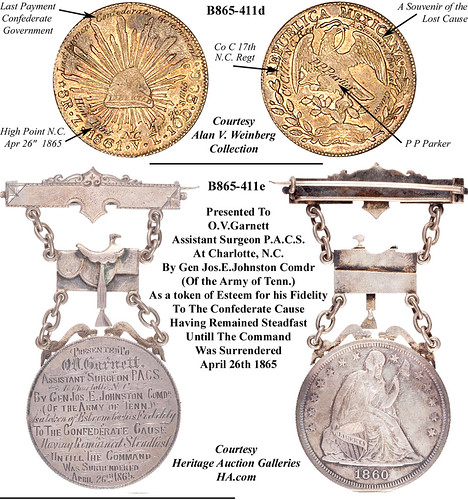
From Peter Bertram's book
To read the earlier E-Sylum article, see: QUERY: ENGRAVED CONFEDERATE CAMP MARION COIN INFO SOUGHT (www.coinbooks.org/esylum_v17n13a15.html)
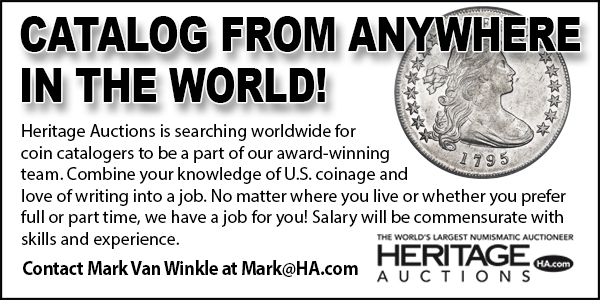
MORE ON THE SCHWAAB COMPANY OF MILWAUKEE
Regarding Dick Johnson's article on the Schwaab company, Peter Bertram writes:
Mr Johnson didn't mention that the United Confederate Veterans (UCV), United Daughters of the Confederacy (UDC) and Sons of Confederate Veterans (SCV) all used Schwaab Stamp & Seal Co rather extensively (and some years exclusively) for their reunion badges. In addition, Charles Crankshaw of Atlanta subcontracted production of the Southern Cross of Honor to them for several years.
When I was writing my Southern Cross booklet, I wrote to them hoping to get some old document information or perhaps arrange to photograph some of the old dies. I was informed they had moved to the 'burbs in the 1950's, discarded the old files, and sold the old dies by the pound for scrap metal! I wept...
Tom Casper writes:
I enjoyed reading the article about Schwaab, Inc. of Milwaukee, WI in the most recent issue of The E-Sylum. I've had a longtime interest in this company because it is located in my home town. For the past couple of years I have had an exhibit of Schwaab-made exonumia at the Central States show in Schaumburg, IL.
Schwaab started in Milwaukee in 1881 as Northwestern Stamp Works. It soon opened stores in St. Paul, MN and Chicago, IL. The branches were closed after a few years and in 1888 the company name was changed to Schwaab Stamp & Seal Company. They made tokens, medals, watch fobs and badges. Their badges, medals and fobs were usually marked with the company name. Their trade tokens, dog licenses and masonic pennies were not marked by them.
I've included scans of two Schwaab pieces; an (1887) German Silver, Northwestern Stamp Works medal from St. Paul, MN, Rulau #Mn-Sp 4 and a gilt brass watch fob from Royersford, PA.
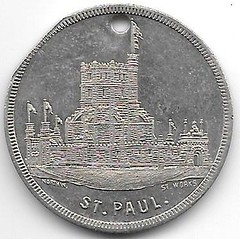
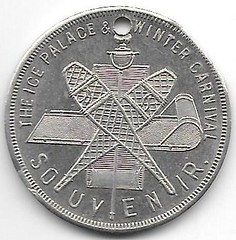
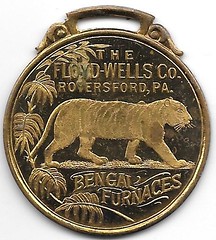
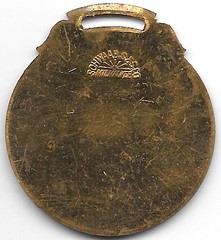
To read the earlier E-Sylum article, see: MEDAL & TOKEN MAKER SCHWAAB OF MILWAUKEE (www.coinbooks.org/esylum_v17n13a17.html)
HOWARD BERLIN VISITS BERLIN, STUTTGART, AND TÜBINGEN
In Berlin I was staying at the new Waldorf Astoria for three days, using some of my Hilton Hhonors points. Hardly a moment went by when I wasn’t asked by the hotel if everything was all right (essentially it was), and did I need anything (I didn’t). One of the calls was from the head concierge. After talking and telling him what I do, he mentioned that there is a new book in the hotel’s library which also includes a bar and lounge (don’t all hotels have a library?). He said the book was about $100 bills.
Curious, I went up two floors to the lounge and asked to see it. The lady had already been contacted by the concierge of my coming. This particular book (1,667 pages, printed in 2013) is titled, “One Million Dollar Book A Photographic Document,” and “powered” (whatever that means) by Sascha Hundorff. Besides the 10,000 images of the face of the notes, it also lists the 10,000 serial numbers. There were 100 numbered and signed books. Perhaps I have missed something but I don’t understand the utility of such a book. Apparently this person has too much time on her hands.
I then flew to Stuttgart, where I was last August. After settling in, I then made a day trip to the old university town of Tübingen. My purpose there was to see the numismatic exhibit of classical coins from the University’s Institute of Classical Archaeology. It was located in the Höhentübingen Castle, whose history goes back to 1078. I met with the museum’s numismatic curator, Dr. Stefan Krmnicek, after looking over the exhibits of approximately 1,000 coins and medals on display out of a collection of just more than 20,000. Not only are the coins on display to the general public, they are also a subject of research by students and faculty. There is “Schatz des Monats” (Treasure of the Month) whereby every month the museum highlights a piece from the permanent collection and clarifies its significance for culture.
Stefan told me the University has a large Islamic coin collection, but in another building about a 20 minute walk away. I went there to inquire about the collection, but I was told its curator was not in and that none of the collection is on public display. So much for that Idea.
Back in Stuttgart, the next day I visited the coin collection of the Landesmuseum Württemberg (Württemberg State Museum), which is also in an old castle (Alter Schloss) on Schillerplatz. Although I have been to Stuttgart several times, I only found out about the museum’s collection from Ursula Kampmann, CoinsWeekly’s top banana. Dr. Krmnicek was kind enough to provide me with the numismatic curator contact (Dr. Mattias Ohm) at the Stuttgart museum.
Among the numismatic items that were integrated among the other historical artifacts, was a display of 625 ancient Roman copper/bronze, silver, and gold coins. However the display lost its impact, especially to visitors not familiar with coins, as none of the coins were specifically identified by emperor or date.
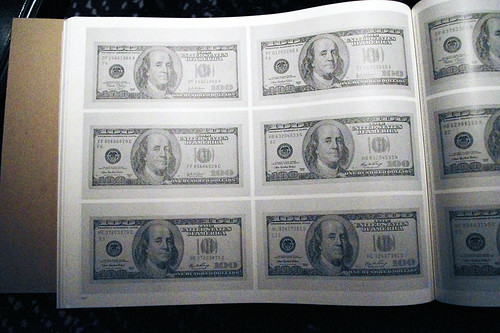
Photo 1. A view of one of the 1,667 pages of “One Million Dollar Book A Photographic Document” available for “reading” in the library lounge of the Waldorf Astoria Berlin hotel.

Photo 2. The front entrance to the Höhentübingen Castle. A numismatic conference was held there in August 2013.

Photo 3. A display of coins (left) and medals (right) of Württemberg in the Höhentübingen Castle.
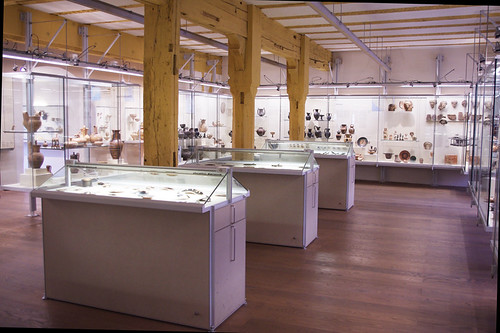
Photo 4. A gallery view of the exhibits in Höhentübingen Castle where about 1,000 coins and medals are on display.

Photo 5. Stuttgart’s Landesmuseum Württemberg, an archaeological history museum as seen from Schillerplatz.
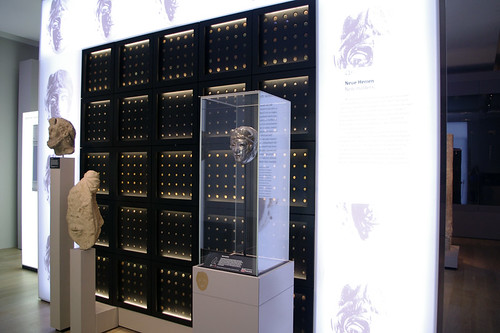
Photo 6. A display of 625 ancient Roman copper/bronze, silver, and gold coins in the Landesmuseum Württemberg but without any information about each coin.
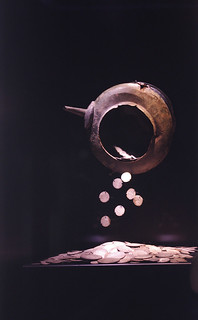
Photo 7. A hoard from Tamm (a city about 17 km north of Stuttgart) consisting of 813 silver coins buried in a copper urn in 1634 in the Landesmuseum Württemberg.

THE 1684 HORTUS MEDICUS TOKEN
Gosia Fort of the University of Pittsburgh Health Sciences Library System writes:
Every two months I choose one item from our Rare Book and Special Collections to describe and "advertise" to our staff and library patrons via our library newsletter, HSLS Update. This month's piece is about a Dutch token. And since I dug out a lot of useful information from the E-Sylum archive, you all are its co-authors! Thank you!

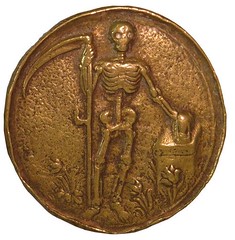
Falk Library has an interesting token in its special collections. It was issued by the Hortus Medicus, the botanic gardens of the University of Amsterdam, founded in 1682 by a decree of the Amsterdam City Council. The gardens were planted in 1683. It is one of the oldest botanical gardens in the world. Hortus Medicus was created to serve as an herb garden for doctors and apothecaries, and to heal the city after the bubonic plague. The first tokens, that granted admission to the garden for physicians, surgeons, and chemists, were sold in 1684. The specimen in our collection is from the first series. It has a clearly visible issue date and the name Hortus Medicus. Under the vase of flowers there is a place to incuse the name of the pass holder (initials H.V.B.). The reverse has an image of a skeleton with a scythe, resting its hand on an hourglass which is positioned on a tomb. The token is made of brass and measures 44 mm (1.25 inches) in diameter.
To read the complete article, see: Treasures from the Rare Book Room: Tokens from the 17th Century (info.hsls.pitt.edu/updatereport/?p=7293)
MORE ON THE PENNY-CENT HOLY WAR
No one seems to object to the use of the term "nickel" to denote the five cent piece, even though it too is not the "official" term for the coin. The mint certainly doesn't, they used it in the same sentence that contained the dreaded "penny." (On the off-chance a non-collector is reading this, I belabor the point that "dime" actually is the legal term for the coin worth ten cents. The coin itself reads "ONE DIME" and it doesn't get any more official than that.)
One thing that might reduce the copper cops' angst a bit (probably not) is the realization that "penny" is clearly a colloquial reference to the physical coin rather than the abstract unit of a hundredth of a dollar. When one uses the term "pennies" here in the US, it's invariably a reference to groups of the one cent coins.
Consider the very different meanings understood by everyone (other than the penny police) of "Do you have fifteen cents?" versus "Do you have fifteen pennies?" One question can be answered "yes" if you happen to have a dime and a nickel, er, five cent piece (or half dime) in your pocket. The other can't; they are actually asking for fifteen of the little copper-plated coins. (If they insist on the solid bronze ones, that's highway robbery. If they are looking for fifteen of the big ones, they're on our side; refer them to the worthies at the EAC.)
Or consider that no one would verbalize $1.63 as "a dollar and sixty three pennies"--in fact if they really mean "pennies" here the correct wrong thing to say would be "a dollar and sixty three pence." ("If you're going to do it wrong, do it wrong right," my brother sometimes says.)
So why bother calling the coin a "penny" instead of a "cent"? Because, in many contexts one finds that in order to make it clear you are talking about the generic physical coin without saying "penny" you often end up saying "one cent piece" or "one cent coin," which is more of a mouthful. The likelihood that saying it quickly and getting on with life is the motivation in most people's minds is suggested by the fact that "penny" is less likely to be used when the meaning is unambiguous. As on coin albums, and boxes of 2x2 holders. Although I hear people call it the "Lincoln Penny," "Lincoln Cent" is much more common. (Though admittedly "Indian Head Penny" is quite common, especially with non-collectors who know the things exist.)
I hope that is enough to convince at least some of the coin constabulary that "penny" is not just sloppy usage of a wrong word as a synonym, but rather, a use of a term which has, in colloquial American English, a slightly different meaning than "cent." And sometimes that different meaning is useful to people. Would I say "penny" in formal presentations or writing? Probably not; I'd drag out "one cent piece." After all, weight (of the completed work) gives bonus points. Something casual? Sure.
To read the earlier E-Sylum article, see: NOTES FROM E-SYLUM READERS: MARCH 23, 2014 : Turning Cents Into Pennies (www.coinbooks.org/esylum_v17n12a15.html)
SPINK SELLS REDDITE CROWN FOR RECORD PRICE

On March 27th, Spink sold the finest known example of the Reddite, an extremely rare silver Crown for a world record breaking price of £396,000.
The Reddite Crown is from the second part of the Glenister collection and is the twin of the The Petition Crown, which sold for £207,000 at Spink in 2007.
The Reddite, a superb pattern crown of 1663 was designed by Thomas Simon and carried a pre-sale estimate of £100,000-£120,000. Having received much attention from collectors and dealers, the Reddite was sold to a telephone bidder for £396,000 (including buyer's premium). This set new world records for both an English Crown and an English silver coin.
To read the complete article, see: Spink Sets New World Record for a English Silver Coin (www.spink.com/press-releases/spink-sets-new-world-record-for-a-english-silver-coin.aspx/?id=coins&year=2014)
The REDDITE CROWN struck in PEWTER is exceedingly rare and possibly a unique pattern. Made from the same pair of dies as the Petition Crown. It is named REDDITE because of the edge inscription.
Edge. REDDITE . QVAE , CAESARIS . CAESARI . &CT . POST followed by the sun rising behind the clouds.
Translation of Latin to English:
Render to Caesar the things which are Caesar’s etc.
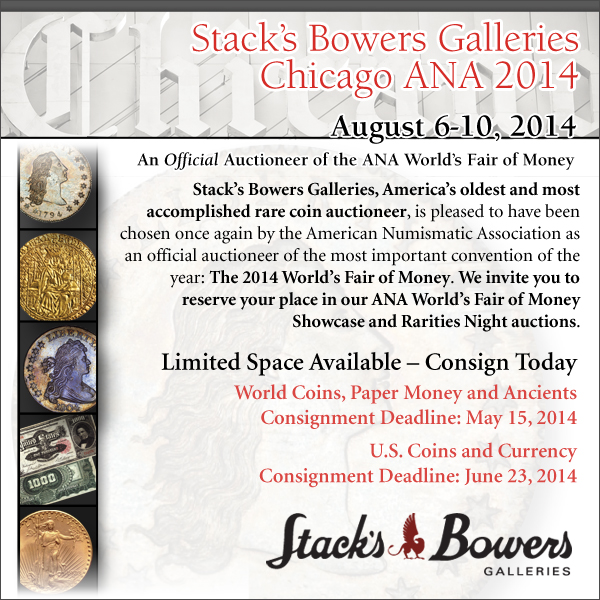
To read the complete article, see: The REDDITE CROWN struck in PEWTER (www.petitioncrown.com/reddite.html)
ROYAL MINT RECEIVES SS GAIRSOPPA BULLION
Tonnes of silver sunk by a German U-boat during World War Two have arrived at the Royal Mint in south Wales after more than 70 years on the sea bed.
The bars were sent from India to wartime Britain but the ship carrying them was torpedoed off the Irish coast in 1941.
The vessel was lost along with more than 80 British and Indian crew.
Recovered from the sea floor at a depth greater than the Titanic, the silver is finally ready to be made into coins.
The Royal Mint at Llantrisant, Rhondda Cynon Taf said a limited number of 20,000 coins will be struck, costing £30 each.
The story began in December 1940 when the Royal Mint, already depleted of its stocks of silver due to the onset of war in 1939, called in additional supplies from India.
The SS Gairsoppa sailed for Britain with its shipment of silver bullion but it broke free from a protection convoy during a heavy storm and was spotted and attacked by the German U-boat.
It was torpedoed just after midnight on 17 February, 1941 and sunk within 20 minutes, with second officer R. H. Ayres the only survivor.
Correspondence at the time between the Royal Mint, which was based in London in 1941, and the Bank of England reveals the impact the loss had on the UK's wartime reserves of silver, even threatening the temporary suspension of production at the 1,000-year-old Mint within two months if supplies ran out.
The ship spent more than 70 years at the bottom of the sea before it was found in 2011, 300 miles (480km) off the Irish coast at a depth of three miles (5km) - half a mile deeper than the Titanic.
A US exploration company, Odyssey Marine Exploration, recovered the silver and some was passed to the Royal Mint for striking the coins, which will be edged with the name SS Gairsoppa
To read the complete article, see: Silver bullion sunk by Nazi U-boat arrives at Royal Mint (www.bbc.com/news/uk-wales-26885092)
FEATURED WEB PAGE: "WON" COINS OF THE REPUBLIC OF KOREA
This week's Featured Web Page is on the contemporary "Won" coins of the Republic of Korea (1966 - Present).
The "Won"-denominated coins emerged at a time when the Republic of Korea’s currency reform of 1962 resulted in a desperate need for new coinage. South Korea embarked on this reform action, the third in twelve years, with support (and some pressure) from the United States, in an effort to lower the price of Korean exports and boost Korea's economy. The reform involved converting from the “Hwan” (환)-denominated currency (1953-1962) to a new “Won” (원) denomination, and revaluing the Korean currency downward. Domestically, this created a situation in the early 1960s in which the Bank of Korea’s currency system relied on both Won-denominated banknotes, and the circulation of the old 50 Hwan and 10 Hwan coins, which were revalued to 5 Won and 1 Won respectively.
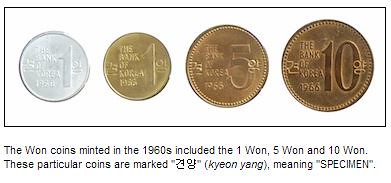
www.dokdo-research.com/koreancoins.html
